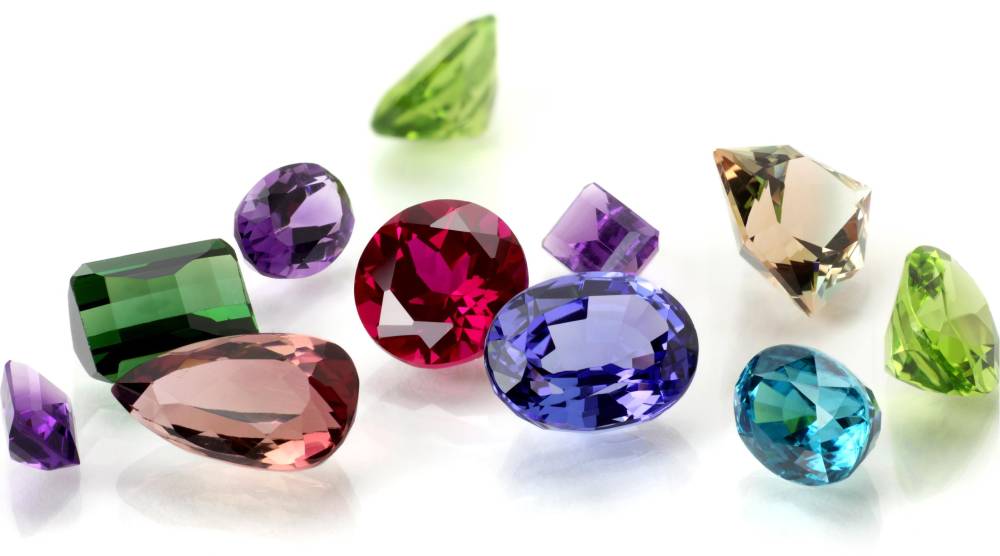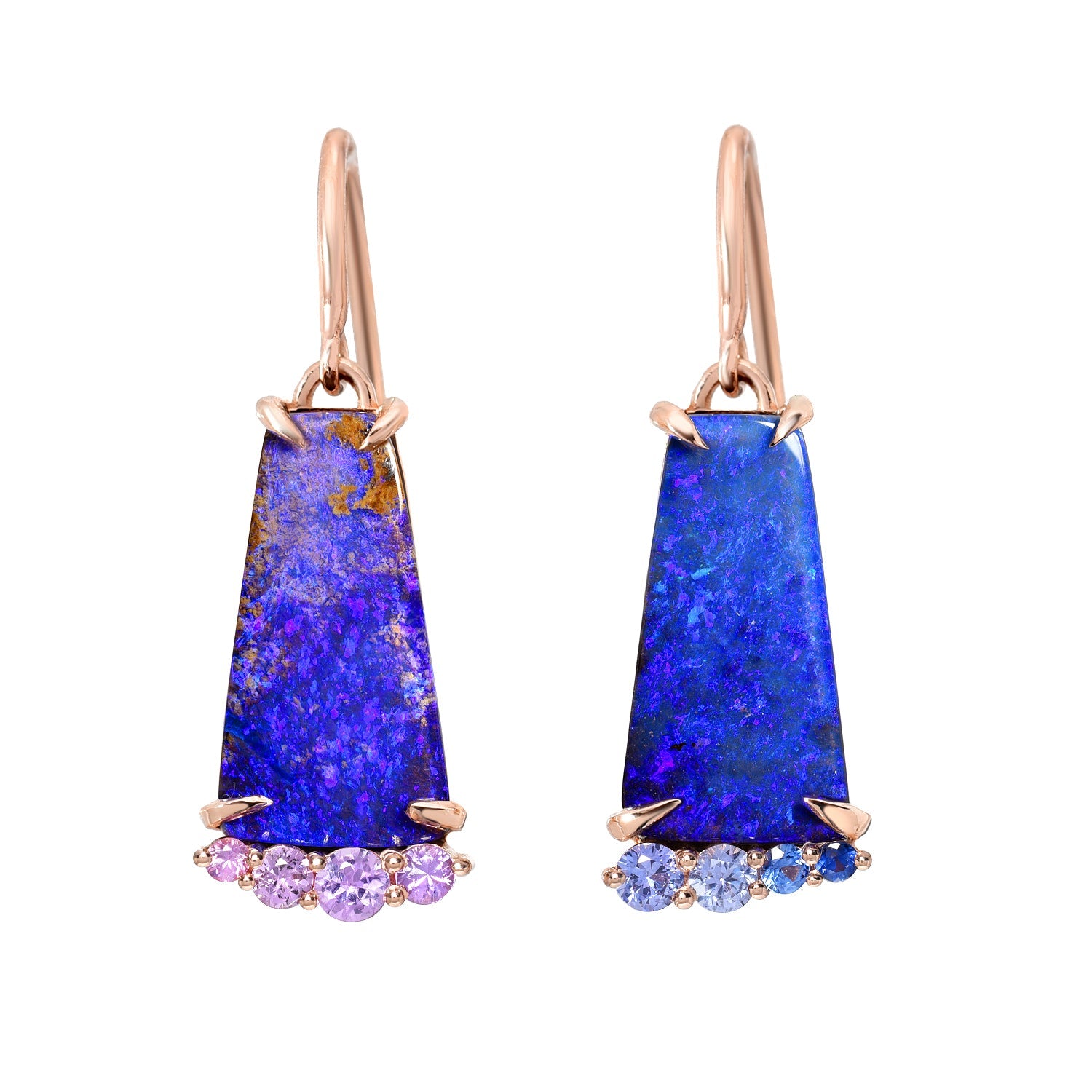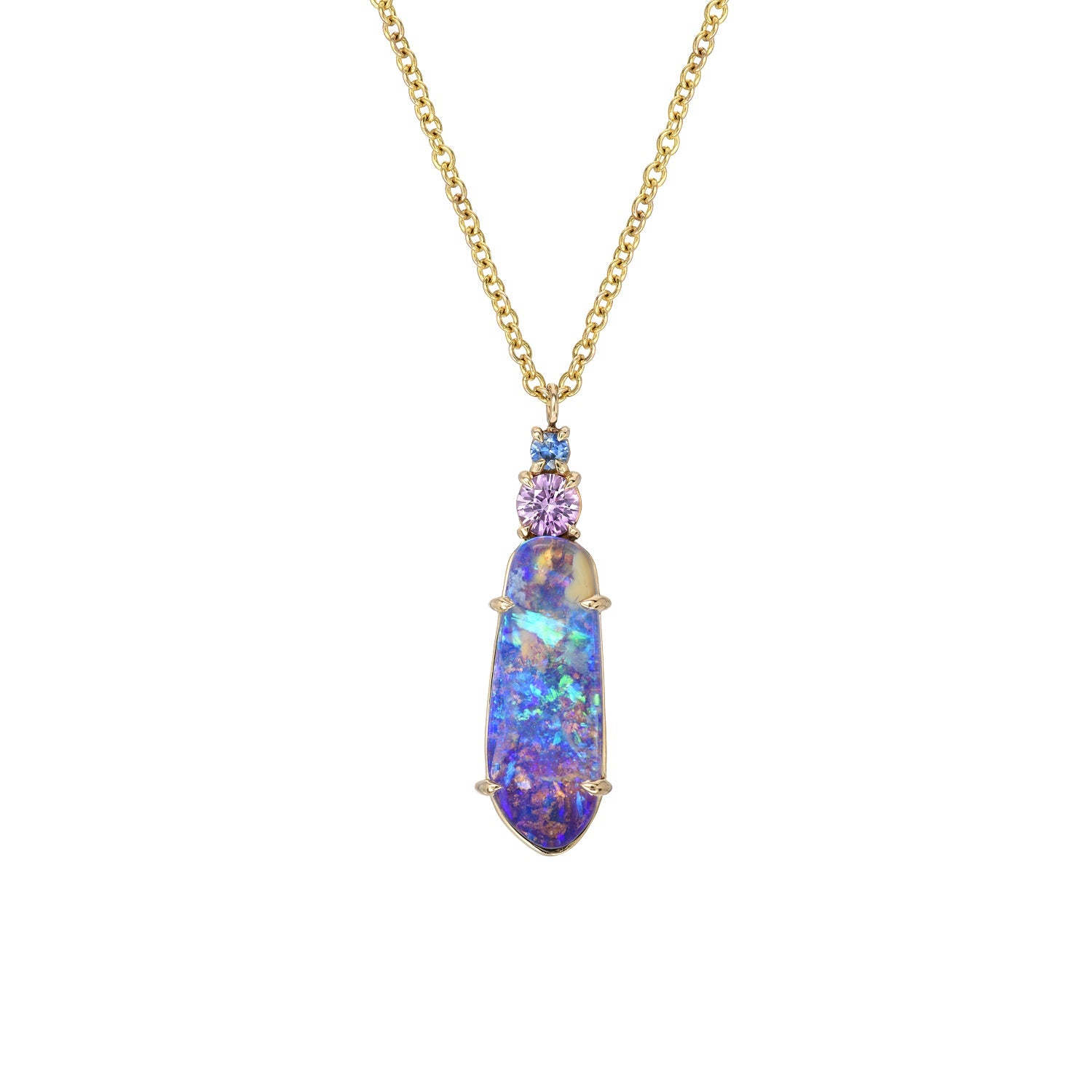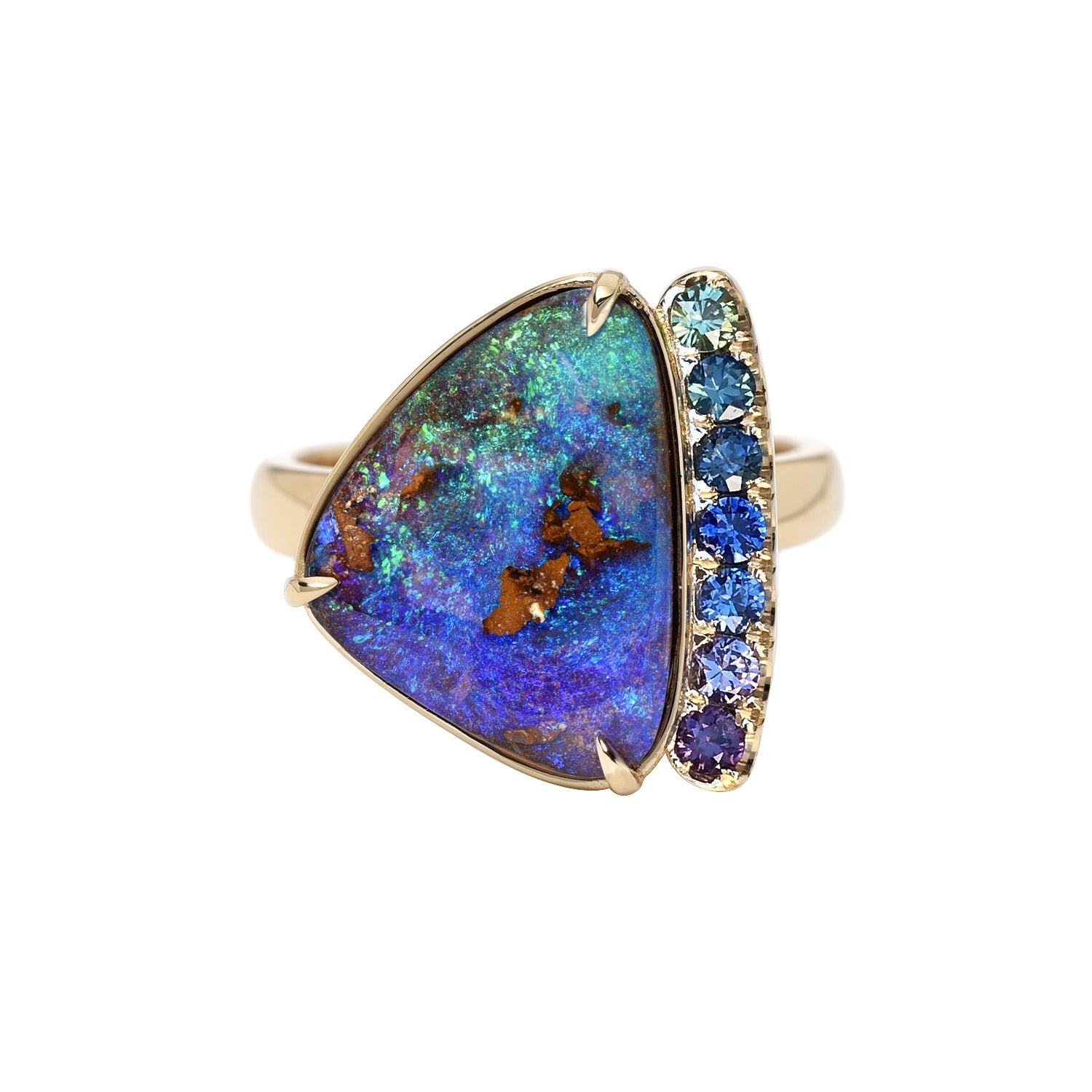
A Crash-course In Gemstones
luis gomezShare
Let’s put on our miner’s hat and talk about gemstones — gemstones in general. Not just Opals, but the whole gamut. From diamonds to garnets, all the way to sapphires. It’s important to understand the range of gemstones available, how they differ and where they come from. Not only to expand your gemological awareness, but to elevate it in case you’re thinking of investing in a special gemstone, maybe for a wedding ring, or perhaps as a personal gift.
What Are Gemstones?
Gemstones are minerals, rocks, or organic matter that are products of geological changes. These stones are pieces of mineralized crystals; these crystals are then cut and polished, and typically used for jewelry and adornments.
Each gemstone has different characteristics. For example, some aren’t minerals at all, but organic matter like amber, jet, and pearls — yet they are still considered by many to be gemstones. Another divergent characteristic is that some gemstones are soft instead of hard. Some change colors based on how much water they absorb — due in part to their porous nature.
Gemstones are normally classified by groups, species, and varieties, and each one is unique. Their characteristics range in terms of refractive index, specific gravity, hardness, cleavage, luster, absorption spectrum, and dispersion.
Gemstones Characteristics
- Gemstones Color: Most gemstones display little beauty in their rough state; they may simply look like rocks or pebbles. To exhibit their full color they require treatment by a professional who understands how to uniquely process each gemstone to maximize its potential — different materials necessitate different methods of handling. Properly cut and polished, gemstones can reflect a spectacular range of color. Color can also impact the value of a gemstone within its grouping. For example, black Opals are the most sought out of its class.
- Gemstone cut: the gemstone's beauty can be enhanced by the way it’s cut. There are two basic types of cuts; cabochon and faceted. The former has a smooth round top with a flat base. Black Opals are an example of a gemstone regularly cut as a cabochon. The cut is commonly applied to softer translucent gemstones, however even harder gems, like sapphires and rubies can be found as cabochons. Faceting, meanwhile, furnishes a gem with many flat surfaces allowing the stone to reflect (light bouncing off its surface) and refract (light bending as it passes through the gem) more light.
- Gemstone weight: gemstones are measured in carats. 5 carats equals 1 gram. It’s critical to understand that some gemstones, for example, rubies, are denser than other gems, like diamonds. In other words, they might be smaller than other gemstones but weigh more. Another way to think of it is this: request a 1 carat ruby and a 1 carat diamond — the ruby is going to look smaller than the diamond, even though they weigh the same.
- Gemstones Hardness: this correlates to the durability of the stone, how it might fare against scratches or abrasions. They are rated on a relative scale called the Mohs Scale. The softest - 1 - is talc. The hardest - 10 - is diamond. It’s important to note, however, that hardness refers to a gemstone’s resistance to scratching, and not its resolve against chipping or breaking.
| MOHS | Gemstone | |
|---|---|---|
| 10 | Diamond |
 |
| 9 | Corundum (Ruby, Sapphire) | |
| 8 | Topaz, Aquamarine |
 |
| 7 | Quartz (Amethyst), Garnet |
 |
| 6 | Opal, Emerald, Alexandrite |
  
|
| 5 | Apatite | |
| 4 | Fluorite | |
| 3 | Calcite | |
| 2 | Gypsum | |
| 1 | Talc | |
- Gemstone species: the majority of gemstones fall under the category of minerals. The mineral species is defined by a combination of chemical makeup and molecular structure. Many stones share common crystalline structures and chemical compositions. Take beryl, for example. It is a mineral species, and in its pure state, is colorless. But with a chromium impurity, it suddenly becomes an emerald. Emerald would be its gemstone ‘variety’ while beryl is its ‘species.’ With an impurity of iron, this beryl species could become aquamarine, or add some manganese to that iron and you have yourself a morganite.
- Gemstone refraction: another key point in classifying a gemstone is how well it refracts (light bending as it enters the gemstone) light. The better the refraction, the higher its potential value. The gemstone’s cut can significantly impact how well the stone will refract light — you can probably begin to see how a skilled gem cutter becomes a very valuable part of the process. Not all stones, within the same species or category, will refract light with the same consistency. One Opal’s refraction might differ from another's.
Most Sought Out Gemstones
Throughout history, gemstones have played a vital role in myths, commerce, religious rituals, etc. They are intricately linked to our past. Several of these gemstones have a legendary appeal, one that’s been recorded in tales, fables, and even historical accounts. Let’s talk about some of the most famous gemstone types.
Garnet

The January birthstone, the Garnet is a unique gemstone that comes in a multitude of colors — including, red, green, orange, pink, and purple. They are part of the silicate family and have been used since the Bronze Age. They are normally mined in Russia, Africa, Sri Lanka, and Namibia. This is the birth gem of Capricorns and an alternate birth gem for Aquarians, whose primary birthstone is Amethyst.
Amethyst

Romans believed that Amethyst had the power to clear the mind and help people think better. They are the February gemstones of the quartz variety. The Greeks carved drinking bottles out of them thinking that they could prevent intoxication. It is a purple stone found in different hues of this color.
Aquamarine

The gemstone that symbolizes life after death, as well as health, fidelity, and wealth, this blue stone is sometimes given out as a wedding present to new couples. It’s also cited as the official stone for year 19 wedding anniversary gifts, thought to bring renewed happiness to marriage. Mined largely in Brazil and Pakistan, they are the birthstone of March along with the less often commercially featured, Jade.
Jade

Also on the birthstone list for March, Jade normally used for royal jewelry - and can be found in a great variety of crowns, particularly in those dating from the 5th and 6th centuries in ancient Korea. Normally a deep green gem, Jade can also come in pink, lavender, and white. It is a silicate mineral, and in Mesoamerican cultures, it was a prized commodity.
Diamonds

The April birthstone, diamonds are a girl’s best friend — or so we have been told. They are the hardest and one of the most valued gemstones in existence. A crystallized carbon structure formed under the perfect fusion of pressure and heat, diamonds develop deep inside the earth's crust. One of the biggest myths concerning diamonds is their age-old link to usage in wedding rings. In reality, they only started being used for this purpose in the 15 century — before that, Opals and other gemstones were employed for those occasions.
Emerald

One of the rarest gemstones in existence, this green beauty is a Venus stone — dedicated by the ancient Greeks to Venus, goddess of love. The birthstone of May, emeralds are said to symbolize fertility and love. They are a variety of the mineral beryl with trace amounts of chromium which gives them their beautiful green hue. Along with her passion for Opal, Cleopatra was well known for her intense appetite for emeralds.
Here at NIXIN Jewelry, we appreciate her love for both of these gems:

Alexandrite

The June birthstone, this relatively new addition to the mention of gemstones, was discovered in Russia in 1830. It is now mined mainly in Brazil, Sri Lanka, and East Africa, as the original deposits are spent. Alexandrite changes color depending on how the sun or light hits it, shifting from purple hued burgundy to rich shades of teal.
Pearl

Another June birthstone, Pearls, are called “tears of gods.” They are the only stones that come from living creatures — a shelled mollusk. It is a composite of calcium carbonate that forms over years as many layers of nacre (pearlescent material coating the inside of the mollusk shell) repeatedly coat an irritant within the mollusk. In the wild, this process may take up to 7 years to complete, and when done, the result is a magnificent creature-created pearl. Pearls symbolize purity, wisdom, integrity, and the feminine spirit.
Opals

Also known as the Queen of Gems, Opals are mainly mined in Australia. They are the October birthstone and are among the most sought-after and beautiful gemstones in existence. They symbolize purity, faithfulness, and confidence.
Here at NIXIN Jewelry we have an appetite for color and a flair for the unique. Ready for that piece you’ve been waiting for? Come find your one of a kind.



